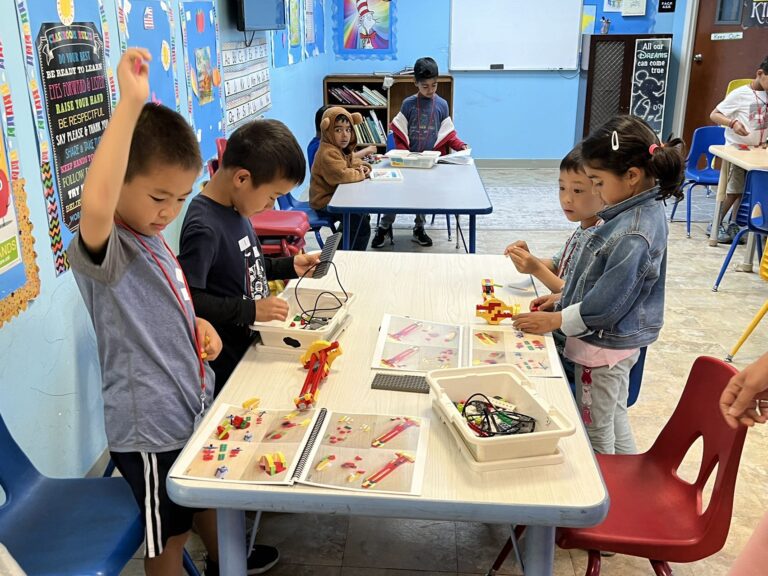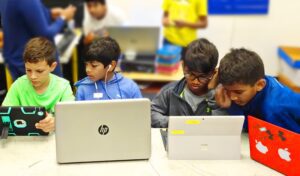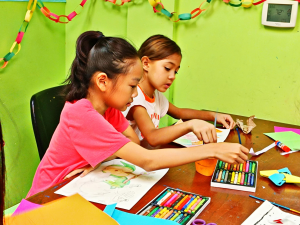
Incorporating STEAM Education in San Ramon Preschools: Strategies and Outcomes
- July 10, 2024
- 6:34 pm
- No Comments
In the evolving landscape of early childhood education, San Ramon preschools are increasingly recognizing the importance of STEAM (Science, Technology, Engineering, Arts, and Mathematics) as a vital component of their curricula. Incorporating STEAM education at the preschool level can foster an environment of exploration, critical thinking, and creativity, setting a strong foundation for future learning. Here, we delve into effective strategies for integrating STEAM education and examine the positive outcomes it brings.
Strategies for Integrating STEAM Education
Interdisciplinary Learning Environments:
San Ramon preschools are leading the way in educational innovation by developing interdisciplinary learning environments that transcend the traditional boundaries of isolated subject learning. This holistic approach integrates various disciplines, allowing young learners to see the connections and relationships between different fields of study, thereby enhancing their overall comprehension and retention of knowledge.
For instance, in a lesson about the water cycle, educators might blend scientific principles with art and mathematics to provide a rich, multi-faceted learning experience. Children could start by learning the scientific aspects of how water evaporates, condenses, and precipitates. This could be followed by an art project where they use paints or crayons to depict different types of clouds and forms of precipitation, thus visualizing the concepts they’ve learned. To incorporate mathematics, students could collect data on local rainfall amounts and use simple charts to track changes over time. This kind of integrated approach not only makes learning more engaging but also helps children understand how different disciplines interact in the real world, fostering a deeper understanding and curiosity about the world around them.
Hands-On Learning:

Emphasizing hands-on learning experiences is vital for the cognitive and developmental growth of young children, particularly in the early stages of their education. By engaging in tactile activities such as building simple structures with blocks, manipulating basic computer programs, or creating artwork inspired by natural objects, children are able to understand and retain complex concepts more effectively. These interactive experiences go beyond traditional rote learning, making lessons more dynamic and personally relevant to each child.
For example, when children construct with blocks, they are not just stacking shapes; they are learning about balance, geometry, and spatial relationships. Such activities also hone fine motor skills and encourage problem-solving. Similarly, using basic computer programs can introduce children to the fundamentals of coding and digital literacy, skills that are becoming increasingly important in today’s tech-centric world. Art projects that draw inspiration from nature can help children develop their observational skills and appreciate the beauty of the world, while also expressing their understanding and emotions through creative means.
These hands-on activities are indispensable as they allow children to apply what they learn in practical, visible ways. This not only reinforces their learning but also boosts their confidence and enthusiasm for acquiring new knowledge. Engaging young learners in these kinds of activities fosters a love of learning and a curiosity about the world, which are crucial foundations for their future educational journeys.
Incorporation of Technology:

Even at the preschool level, the integration of technology is transforming STEAM education, providing unique and interactive learning opportunities for young children. Educators are increasingly leveraging tools such as tablets and smartboards to present interactive models and simulations that captivate young minds and make complex ideas more accessible. These technologies enable educators to create vivid, manipulable visuals that illustrate scientific concepts, mathematical figures, and more, enhancing the learning experience through engagement and interactivity.
For instance, apps designed for early learners that teach coding through simple games or interactive storytelling are proving particularly effective. These applications use intuitive interfaces suitable for young users, allowing them to solve puzzles or navigate stories through basic programming commands. This method introduces children to logical thinking and problem-solving strategies, foundational skills in computer science, in a manner that feels more like play than education. Moreover, using technology in such interactive ways can significantly boost a child’s engagement and motivation, making learning both fun and effective.
Incorporating these technological tools helps educators meet the diverse needs of young learners and adapt to different learning styles. Whether visual, auditory, or kinesthetic learners, technology-enriched environments offer various ways for children to explore and understand new concepts. Thus, even preschoolers can begin to develop an early affinity for STEAM subjects, setting a strong foundation for future learning.
Collaboration with Local STEAM Organizations:
Many San Ramon preschools are partnering with local museums, science centers, and art galleries to provide children with real-world STEAM experiences. Field trips to these locations make the learning process exciting and dynamic, while also connecting classroom lessons to the outside world.
Outcomes of STEAM Education in Preschools
Enhanced Problem-Solving Skills
One of the most significant outcomes of STEAM education is the enhancement of problem-solving skills. Through engaging in STEAM activities, children learn to think critically and develop solutions to various challenges. For instance, when faced with a task like building a structure with limited materials, children must experiment, fail, and try again, which strengthens their resilience and adaptability. These skills are invaluable not only in academic settings but also in everyday life, as they enable children to approach problems methodically and creatively.
Increased Creativity And Innovation
By integrating the arts with scientific and mathematical concepts, STEAM education encourages children to think creatively and innovatively. This interdisciplinary approach nurtures their imagination and promotes an inventive mindset. For example, a project that combines painting with geometric shapes can help children see the beauty in math and the structure in art. This creative thinking extends beyond the classroom and can lead to a lifelong love of learning and discovery, fostering an environment where innovation is a natural part of the learning process.

Improved Academic Performance
Research indicates that early exposure to STEAM subjects can lead to better performance in these areas later in school. Children who engage with STEAM from a young age are often more adept at handling complex concepts as they advance through their education. This early foundation helps them develop a deeper understanding of scientific principles, mathematical reasoning, and technological applications. As a result, they are more likely to excel in these subjects, showing higher academic achievement and greater enthusiasm for learning.
Greater Interest In Future STEAM Careers
Early exposure to STEAM helps children understand and appreciate the roles these fields play in our world. This awareness can spark an interest in pursuing STEAM careers, which is crucial in an increasingly tech-driven society. By participating in hands-on experiments, coding activities, and engineering projects, children gain a practical understanding of how these disciplines impact everyday life. This early interest can be nurtured through continuous engagement and encouragement, guiding children towards future careers in science, technology, engineering, arts, and mathematics.
Enhanced Collaboration And Communication Skills
STEAM education often involves collaborative projects where children must work together to achieve a common goal. These activities teach them the importance of communication, teamwork, and the ability to listen and respond to others’ ideas. For instance, building a group project like a simple robot or a community garden requires planning, discussion, and shared effort. These experiences help children develop strong social and emotional skills, which are essential for success in both academic and real-world settings.
Development Of Analytical Thinking
Engaging with STEAM subjects from an early age helps children develop analytical thinking. Activities like conducting experiments, analyzing data, and interpreting results encourage children to observe closely, ask questions, and make informed decisions. This analytical approach to learning helps them understand the scientific method and apply it to various aspects of their lives, promoting a logical and evidence-based way of thinking.
Encouragement Of Lifelong Learning
STEAM education fosters a mindset of lifelong learning by encouraging curiosity and a passion for discovery. Children exposed to these subjects early on are more likely to continue exploring and learning about them as they grow older. This continuous pursuit of knowledge can lead to a more fulfilling and intellectually stimulating life, as children become adults who value and seek out new information and experiences.
In conclusion, the integration of STEAM education in preschools yields numerous positive outcomes, from enhanced problem-solving skills and increased creativity to improved academic performance and greater interest in STEAM careers. By fostering collaboration, analytical thinking, and a love for lifelong learning, STEAM education prepares young learners for a future where these skills are essential for personal and professional success.
In conclusion, the integration of STEAM education in San Ramon preschools is more than a trend; it’s a forward-thinking approach to education that prepares children for academic success and a productive future. By adopting innovative strategies and focusing on hands-on, interdisciplinary learning, these preschools are setting a new standard for educational excellence.
